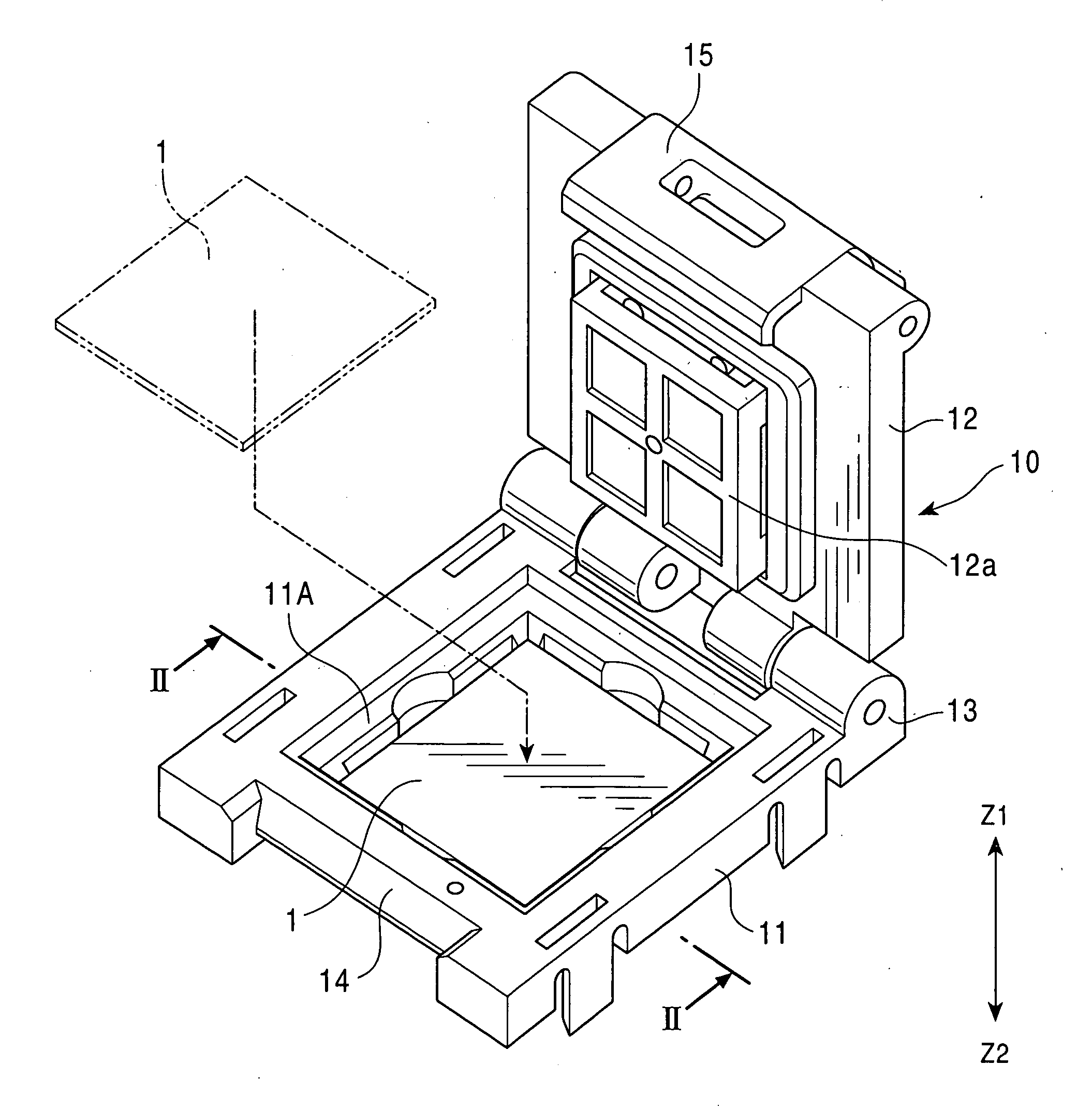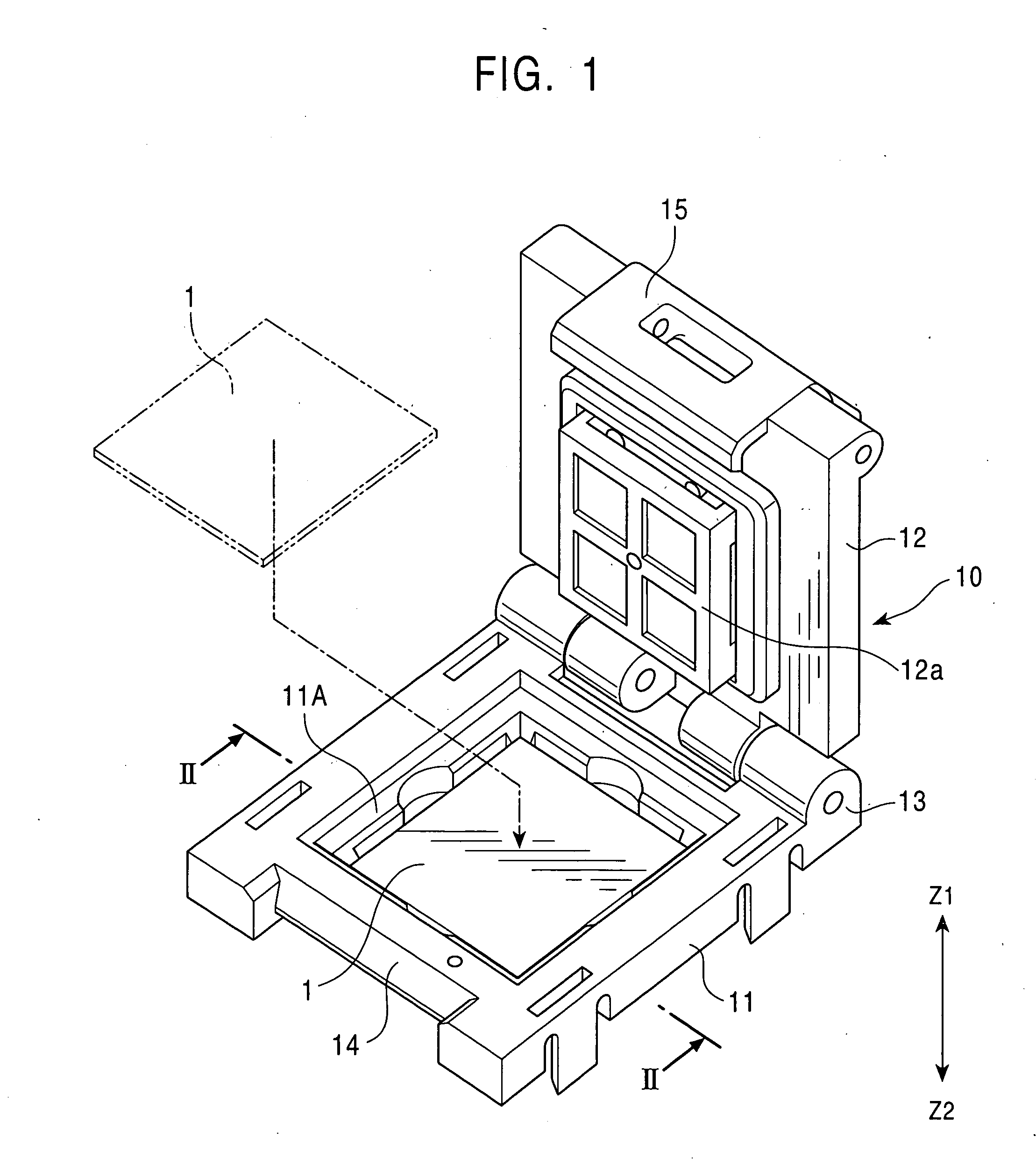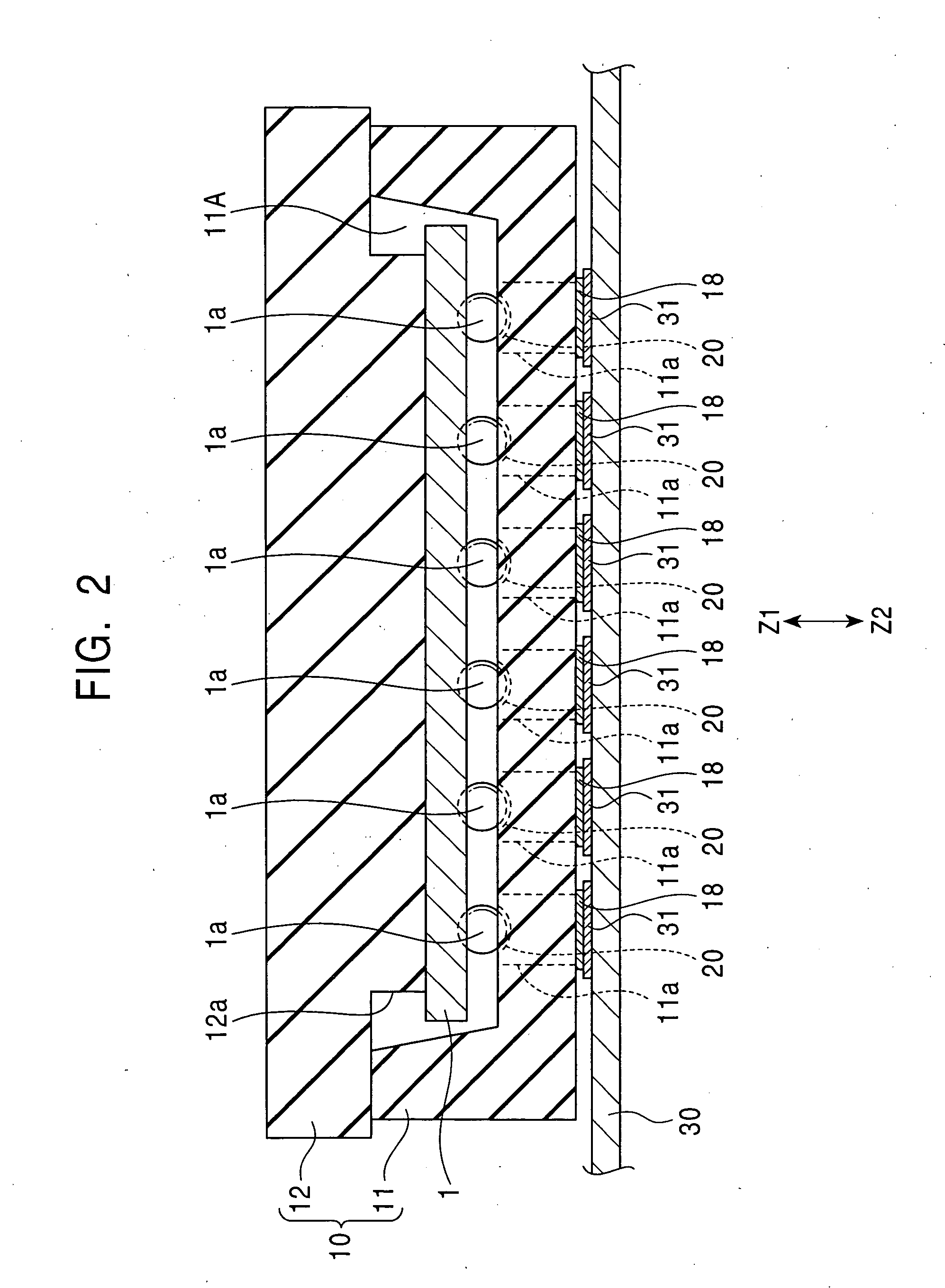Connector
a technology of connecting rods and connectors, applied in the direction of coupling device connections, electrical apparatus construction details, instruments, etc., can solve the problems of limiting the amount of pressure that can be applied, increasing the pressure applied to the semiconductor is not necessarily the best solution, and unable to maintain a stable electrical connection between the spiral contact and the spherical conta
- Summary
- Abstract
- Description
- Claims
- Application Information
AI Technical Summary
Benefits of technology
Problems solved by technology
Method used
Image
Examples
first embodiment
[0038] [First Embodiment]
[0039]FIG. 3 is a plan view of spiral contacts according to a first embodiment of the present invention. FIG. 4 is a cross sectional view taken along line IV-IV of FIG. 3 in which the area between a spiral contact and a spherical contact is partially enlarged. FIG. 4A illustrates the state before the contacts come in contact, and FIG. 4B illustrates the state after the contacts come into contact.
[0040] A spiral contact 20A illustrated in FIG. 3 is formed flush with a plane. The periphery of the spiral contact 20A is surrounded by a square base 21. The base 21 is fixed to the edge of the upper opening of a depression 11a.
[0041] As illustrated in FIG. 3, a root 22 of the spiral contact 20A is located at the base 21, and a tip 23 extending in a spiral from the root 22 is located at the center of the depression 11a.
[0042] For the spiral contact 20A according to the first embodiment illustrated in FIG. 3, the width of the root 22 is W0 and the width of the tip...
second embodiment
[0053] [Second Embodiment]
[0054]FIG. 5 is a plan view of a spiral contact according to a second embodiment of the present invention. FIG. 6 is a cross-sectional view taken along line VI-VI of FIG. 5 and illustrates the connection between a spiral contact and a spherical contact.
[0055] A spiral contact 20B according to the second embodiment illustrated in FIG. 5 differs from the spiral contact 20A according to the first embodiment in that the discontinuous contact region 24 is a protrusion protruding towards the outer circumference of the spiral contact 20B instead of protruding towards the inner circumference (the discontinuous contact region 24 is a protrusion on the outer circumference).
[0056] As illustrated in FIG. 6, similar to that described above, for the spiral contact 20B according to the second embodiment, when the electronic component 1 is pressed towards the Z2 direction, the tip of the angular portion of the discontinuous contact region 24 of the spiral contact 20B com...
third embodiment
[0058] [Third Embodiment]
[0059]FIG. 7 is a plan view of a spiral contact according to a third embodiment of the present invention.
[0060] A spiral contact 20C according to the third embodiment differs from the spiral contacts 20A and 20B according to the first and the second embodiments, respectively, in that the discontinuous contact region 24 is not a protrusion and, instead, is a notch in the spiral contact 20C. Even if the discontinuous contact region 24 is a notch, the discontinuous contact region 24 can partially come into contact with the surface of a spherical contact 1a and form a contact point P similar to that described above.
[0061] Since the discontinuous contact region 24 according to the first and second embodiments is a protrusion and a two-dimensional structure formed on a plane, it can be formed easily by common methods such as photolithography.
[0062] In the above embodiments, the discontinuous contact region 24 is formed on one location on the spiral contact 20. ...
PUM
 Login to View More
Login to View More Abstract
Description
Claims
Application Information
 Login to View More
Login to View More - R&D
- Intellectual Property
- Life Sciences
- Materials
- Tech Scout
- Unparalleled Data Quality
- Higher Quality Content
- 60% Fewer Hallucinations
Browse by: Latest US Patents, China's latest patents, Technical Efficacy Thesaurus, Application Domain, Technology Topic, Popular Technical Reports.
© 2025 PatSnap. All rights reserved.Legal|Privacy policy|Modern Slavery Act Transparency Statement|Sitemap|About US| Contact US: help@patsnap.com



